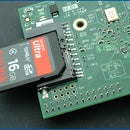Introduction: DIY Fume Extractor
I've spent too much time breathing the stuff that emanates from the tips of soldering irons. After checking out the available fume extractors, I thought I could do better putting something together myself. If it didn't turn out that way, at least it would be my loud, expensive, and low air flow fume extractor. Maker’s remorse is always better than buyer’s remorse.
Luck was on my side this time and I don’t have to deal with any remorse. I’m happy with how this project turned out. There’s more than a couple improvements that I could make and more than a few things I could have added at the beginning, but keeping it simple helped get it done. This DIY fume extractor does the job and it's a great addition to my work bench.
WARNING: This project requires making AC power connections. Please give it the diligence it deserves. Don't take risks that might end up hurting you or someone else.
Step 1: BOM
Cooltron AC Axial Fan 120mmx120mmx38mm 110 CFM 2600 RPM
Carbon Filter Material
2 x Silverstone Fan Filter with Grill 120mm
120mm Chrome Fan Grill
Hammond 1415D 6”x6”x6” Steel Enclosure
16A 125V DPST Rocker Switch E-Switch RR812C1121 or equivalent
1/4” Wire Grommet
Wire Eyelet
4 x 2” #8-32 Machine Screws
4 x 1.5” #8-32 Machine Screws
4 x #8-32 Nuts
4 x #8-32 Nylon Lock Nuts
4 x #8-32 Wing Nuts
IEC Power Cord (Computer Power Cord)
Shrink Tube
Rust-Oleum “Hammered” Black Spray Paint 7215830
Self-Adhesive Rubber Feet
Step 2: Cutting and Drilling
Cut a 4.5” hole in the center of each lid, and drill the grill and fan holes
Layout the holes for the power switch and power cord on the enclosure. Leave enough space to clear the 1.5” thick fan. I drilled my switch hole too far back and it was a bit of a pain to modify the fan, etc. to get it all to fit.
Drill holes for the power switch and cord. I used a .75" – .5" shank drill bit which is a little small for the switch. I opened up the hole and cut the keyway by filing out the extra material.
I had some thumb screws laying around that I thought would make the fume extractor look more awesome and make changing the filter easier. I drilled out the original lid holes in the enclosure and tapped them for the thumb screws.
Step 3: Mock Up the Fume Extractor
Use one of the Silverstone grills as a template to cut a square of filter material and poke the mounting holes
Mount a Silverstone grill on the other enclosure lid using the 1.5" #8-32 screws and nuts
Slide the filter down the 1.5" #8-32 screws and place the second Silverstone grill on top
Secure the Silverstone grill with 4, #8-32 wing nuts
Mount the filter sandwich and the fan in the enclosure with the lid screws included with the enclosure.
Make sure everything fits. If your switch hole is just big enough, it can be difficult to pop the switch in and out. I made sure the switch fit when I filed the hole. Rather than struggle with the switch, I ran the power cord that came with the fan out the switch hole so I could power the thing up. If everything fits and works up to this point, disassemble everything and get ready for paint. Depending on how your enclosure fits together, at this point you might want to make some notes on the back of the lids and inside of the enclosure denoting top, bottom, front lid, back lid, etc.
Step 4: Paint
Clean and remove all dust, oil, and dirt from the surface to be painted.
Paint the parts in a well-ventilated, well lighted, area. I hung mine in the garage with modified wire clothes hangers after blowing the dust out the door, and off the parts, with a compressor
Follow the directions on the can and allow the paint to fully dry
I’m amazed at how the Rust-Oleum “Hammered” finish turned out. I’m in love with this stuff.
Step 5: Final Assembly
Mount the fan and the chrome grill on the back lid leaving the nylon lock nut intend for the ground connection loose
Insert the .25" wire grommet into the power wire hole on the enclosure
Cut the C13 (computer plug) off of the IEC power cord
Pass the cord through the wire grommet from the outside of the enclosure and pull through a good length of cord
Strip the outer insulation off of a sufficient length of the power cord to expose the insulated conductor wires
Tie a knot in the power cord to prevent it from being pulled out the power cord hole and grommet. This stain relief will protect your connections should the cord get pulled or yanked.
Strip all three of the power cord conductors
Cut the fan connector off the power cord that came with the fan with a little more than enough wire to reach the switch
Separate and strip the fan cord’s conductors
Pass all four wires out the power switch hole, add shrink tubing to all four wires, and solder in the switch (consult the switch data sheet and/or pin out the switch with a multimeter to ensure a proper connection)
Strip the ground wire and install the eyelet
Install the lid/fan assembly, switch, and ground wire
Plug the power cord into an outlet and test the fan and switch
Unplug the power cord
Assemble the filter sandwich and install the front lid
Stick the self-adhesive rubber feet to the bottom of the enclosure
Step 6: VoilÃ
Thanks for reading.





